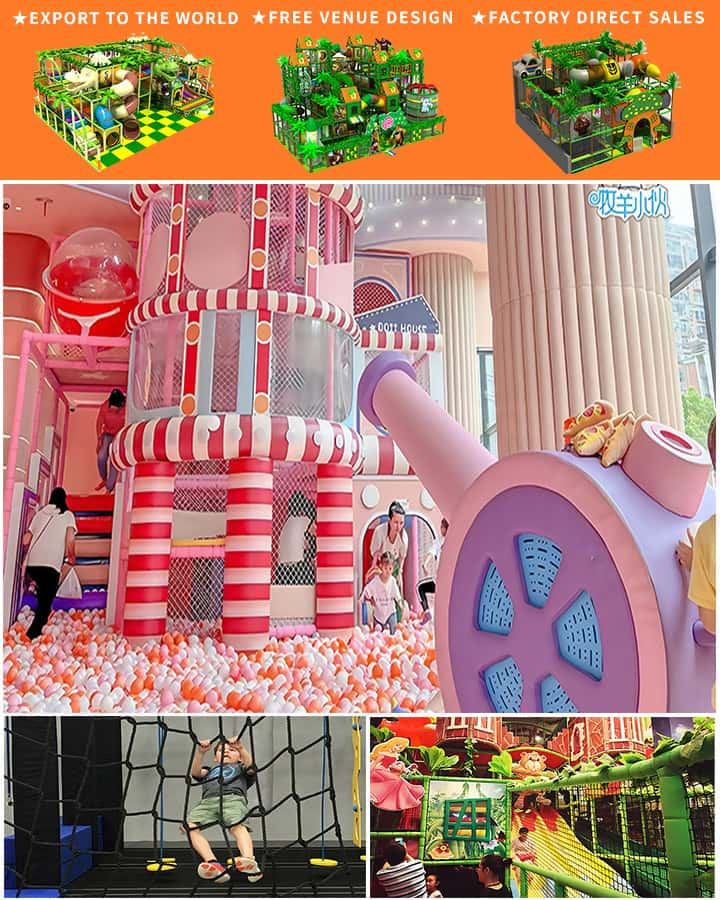Autism Spectrum Disorder (ASD) is characterized by a variety of sensory processing differences that can significantly impact a child’s daily life. Sensory play equipment has proven to be an effective tool in supporting children with autism, offering therapeutic benefits that aid in their sensory development. This article explores the importance of sensory play equipment and its role in helping children with autism navigate their unique sensory experiences.
Understanding Sensory Processing in Autism
Children with autism often experience heightened or diminished sensitivity to sensory stimuli such as light, sound, touch, and movement. This altered sensory processing can lead to challenges in environments that most neurotypical children find manageable or even enjoyable. For instance, a child with auditory sensitivity might find the sound of a vacuum cleaner overwhelming, while another might crave deep, sustained pressure due to tactile seeking behaviors.
The Role of Sensory Play Equipment
Sensory play equipment is specifically designed to address these sensory needs, offering controlled and safe ways for children to interact with different stimuli. Here are some key types of sensory play equipment and their benefits:
- Tactile Play Equipment
- Play Sand and Water Tables: These tables allow children to explore different textures and temperatures through play, enhancing their tactile senses.
- Textured Balls and Squeeze Toys: Objects with various textures help children become more accustomed to different tactile sensations, promoting desensitization and reducing tactile defensiveness.
- Visual Play Equipment

- Interactive Light Panels: Featuring colorful, changeable lights, these panels captivate children’s visual attention, providing a controlled environment to process visual stimuli.
- Mirrors: Using mirrors can help children understand their reflections and develop self-awareness, which can be particularly beneficial for those with social communication challenges.
- Proprioceptive and Vestibular Play Equipment
- Swings and Rockers: These provide vestibular input, which is crucial for balance and spatial orientation. Swings also offer soothing, rhythmic motions that many children with autism find calming.
- Crash Mats and Pillows: Soft play surfaces and weighted blankets offer deep pressure feedback, helping to ground the child and provide a sense of security.
- Auditory Play Equipment
- Sound Instruments: Simple instruments like drums, xylophones, and chimes allow children to explore different sounds in a controlled manner, helping them become more comfortable with auditory stimuli.
- Noise-Cancelling Headphones: For children who are overly sensitive to noise, these headphones can create a quieter, more manageable auditory environment.
Benefits of Using Sensory Play Equipment
Enhanced Sensory Processing: By regularly engaging with sensory play equipment, children can gradually adapt to different sensory inputs, reducing overreactions and meltdowns in everyday situations.
Emotional Regulation: Many forms of sensory play promote relaxation and reduce anxiety, helping children learn to self-regulate their emotions better.
Improved Social Interaction: Group activities centered around sensory play equipment can serve as a platform for improving social skills, encouraging cooperative play and communication among peers.
Cognitive Development: Engaging in sensory play stimulates cognitive functions such as problem-solving, attention span, and memory, contributing to overall brain development.
Practical Considerations for Parents and Caregivers
When selecting sensory play equipment for a child with autism, it’s essential to consider individual preferences and sensitivities. Here are some practical tips:
- Start Slow: Introduce one piece of equipment at a time to avoid overwhelming the child.
- Observe Reactions: Pay close attention to how the child responds to different stimuli, adjusting the selection as needed.
- Create a Safe Space: Ensure the play area is safe and free from distractions to allow the child to focus on the sensory experience.
Conclusion
Sensory play equipment offers invaluable support for children with autism, facilitating sensory integration and promoting overall well-being. By incorporating these tools into daily routines, parents and caregivers can create an enriching environment that helps children thrive. Investing in sensory play equipment is not just beneficial but transformative, opening new avenues for learning and growth for children on the autism spectrum.




